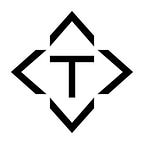By Emilee Christianson, Senior Account Manager at Trekk
To me, almost nothing can beat the look on someone’s face the first time they experience augmented reality. It’s like watching a kid in a room full of puppies. Because I’ve been surrounded by AR for years now, it’s easy for me to forget that for someone who’s never seen it before, AR can seem like magic.
You’ve probably seen some of our augmented reality projects, and perhaps you are wondering — how did they do that?
Well, over the next several posts, our team’s going to break down the AR knowledge we’ve gained by developing countless AR marketing campaigns for ourselves and our clients. We’ll start with the basics and then get into the nitty-gritty of what marketing, design, and print professionals need to know to get started with this interactive technology.
First of all, what IS augmented reality?
Augmented reality uses a device, usually a smartphone or tablet, to augment the real world. Think of it as adding an extra layer onto your physical surroundings. That layer could be an animation, a 3D model, or any combination of images, sound, and video that together create an immersive experience.
So it’s basically the same as virtual reality?
Nope. These technologies are often lumped together because people who are interested in one are often interested in the other. Trekk is a case in point — we’re also really into VR, but that’s a topic for another time.
Virtual reality involves tricking the mind into experiencing a completely alternative world, one that is not really there. Today’s VR usually involves a wearable — a headset or glasses that you put on to block out the real world. Many of these headset experiences have an audio component to more fully immerse the viewer in the virtual world.
With AR, on the other hand, you’re still looking at the real world… just an enhanced version of it.
One of the important differences between AR and VR is that augmented reality can be used as a bridge between the physical world and the digital one. When implemented with a marker — usually an image on a print piece — AR acts as a catalyst that moves the viewer from that print piece to a digital channel. To see what I mean, check out these postcards we created for thINK.
We call this our “paper to pixels” approach and we use it as part of our clients’ multi-channel marketing strategies. In a world of smartphones and on-demand e-commerce, it’s one of the best ways we’ve found to seamlessly transition a potential customer from print to digital in order to keep the conversation going.
Seems cool, but is it useful?
AR has infinite use cases across industries. Our prediction is that we’ll see it more and more frequently in healthcare and navigation, and just think about the applications in education. Developing a training manual? Imagine bringing the printed piece to life with augmented videos, 3D models, and voice instruction. It’s the multi-dimensional way that people experience most media these days, so why shouldn’t educators be able to harness this technology to reach more learners, with their unique learning styles?
We use it most often to help our clients reach a larger audience across more channels. When we’re all constantly connected via our smartphones, augmented reality is a way for marketers and printers to meet customers where they are.
Neat! How do I get started?
Our AR concepts are first and foremost about the communication strategy — what’s the message we want to deliver, and what’s the action we want the audience to take? Once we decide on that, our developers and designers work to bring the experience to life. In the next few posts in this series, we’ll dive further into the AR play-by-play.
Have yet to experience augmented reality? Download our Paper to Pixels app for iPhone or Android and experience the magic for yourself.
Originally published at https://www.trekk.com.
